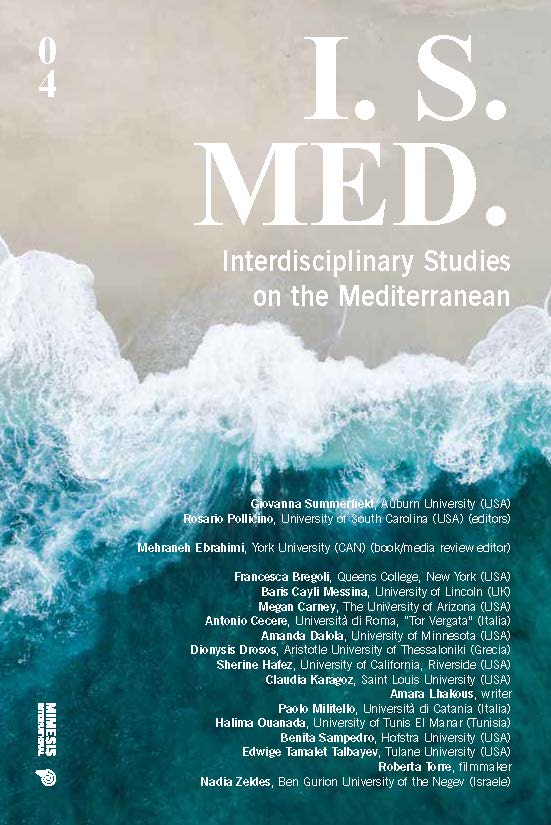Mediterranean Thought: Queerness and Migration in Contemporary Italian Literature
Keywords:
Mario Desiati; Gianluca Nativo; Emanuela Anechoum; Mohamed Maalel; Queer MeridionalismAbstract
Today, mainstream narratives about migration centre around an imagery of attack, portraying Europe as a Fortress under siege and migration as an invasion. Significantly, in Italy, these narratives intersect with homonationalism. While the term was coined for the U.S. context (Puar 2007), in Italy homonationalism places openness and acceptance at the heart of Europe (in countries like France, Germany, and the Netherlands), and simultaneously promotes the need to protect the country and its LGBTQIA+ citizens from migrants (Colpani and Habed 2014). At the same time, Italian homonationalism intersects with antimeridionalist discourses, which deem Southern Italians as a hindering factor in the socio-cultural advancement of the country towards Northern Europe (De Vivo and Dufour 2012; Colpani and Habed 2014; Acquistapace et al. 2016). Consequently, this rhetoric endorses a push and a migratory movement towards Northern European countries, and a simultaneous rejection of both its Southern regions and the Mediterranean context (Colpani 2015). However, the Italian literary scene features a new trend: novels depicting LGBTQIA+ characters refusing these pre-set mainstream narratives. The article analyses Spatriati (2021) by Mario Desiati, Polveri sottili (2023) by Gianluca Nativo, Baba (2023) by Mohamed Maalel, and Tangerinn (2024) by Emanuela Anechoum, as case studies, in order to investigate how they chart different cartographies of migration, how they challenge a homonationalist rhetoric, and how they even trouble a linguistic standard. While Nativo tackles movements between Campania and the United Kingdom, Desiati instead focuses on a journey from Apulia to Berlin. However, both Spatriati and Polveri sottili simultaneously reproduce and challenge the homonationalist view of the Mediterranean, ultimately rejecting Northern Europe and promoting a view from the South. Significantly, the novels by Maalel and Anechoum reverse the perspective provided by Desiati and Nativo, opening Italy’s Southern shores towards other Mediterranean regions and towards Tunisia and Morocco in particular. Ultimately, the article argues that the novels foster an in-betweenness mirrored by the space of the Mediterranean sea, which paves the way for a Southern thought (Cassano 2012), or rather, for a Mediterranean thought of complexity, fluidity, and liminality.


